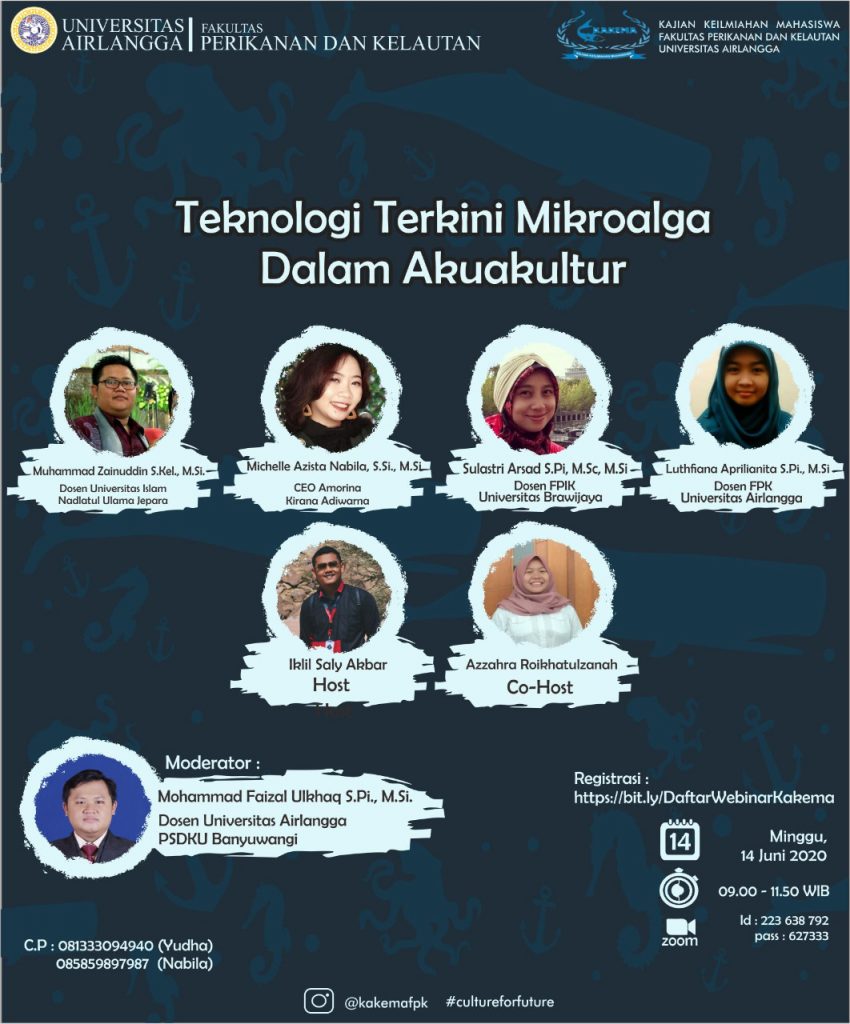UNAIR NEWS – Global warming has affected the life of organisms. One of the effects of global warming is its effect to the abundance and diversity of plankton and microalgae in the waters.
Understanding the importance of microalgae’s role in waters, the Student Scientific Study (KAKEMA) of Faculty of Fisheries and Marine Universitas Airlangga (UNAIR) held a webinar via Zoom and YouTube livestream titled “The Latest Microalgae Technology in Aquaculture”.
This time, KAKEMA invited Department of Fish Health and Aquaculture Management (MKI-BP) lecturer Luthfiana Aprilianita Sari, S.Pi., M.Si., to know further the important role of microalgae in waters when global warming occurs.
Global warming is a phenomenon where an increase of temperature reaches 1 degree Celsius each year. According to NOAA (The National Oceanic and Atmospheric Administration ) 2019 is the second warmest year after 2015. Earth’s temperature has risen 1.15 degrees Celsius.
“The damage from global warming causes the aquatic environment to become unstable. This is marked by changes in current, temperature and rainfall, “said Luthfiana.
In the webinar, Luthfiana explained that microalgae are a group of phytoplankton where their lives float following a single current or colony that is in waters. She said, microalgae is the most basic food source for upper-level consumer organisms.
Luthfiana added that global warming greatly affects certain waters, especially estuary waters (brackish waters, ed). The meeting current between the river and the sea creates high nutrient levels. This is an indicator of microalgae growth.
In addition to nutrients, several parameters such as temperature, pH, salinity, dissolved oxygen, current, and light, affect the growth of microalgae.
“Some of the influential parameters like rainfall, water flow, and wind direction also affect the abundance of microalgae in waters. There was a change in the direction of the wind from east to west. The currents are ocean currents where the nutrients entering the waters are lesser, ” she explained.
Luthfiana explained, several phenomena in the waters, such as discoloration caused by Chlorophyceae and Bacillariophycea and the amount of nutrients followed by abundance of microalgae, have an impact on the diversity of organisms. Changes in parameters such as currents, temperature, and wind also influential.

“When nutrients increase, microalgae increases and there is improved diversity in the waters,” said Luthfiana.
Between January and June, Sedati waters are dominated by green algae (Chlorophyceae), then the next season is dominated by Bacillariophycea while in August there was a high wave flow decreasing the amount of plankton abundance.
“This phenomenon may change again when the transition of seasons and there will be new changes, moreover, the environmental conditions got better during Covid-19 pandemic,” concluded Luthfiana. (*)
Author: R. Dimar H.A
Editor : Binti Q Masruroh





